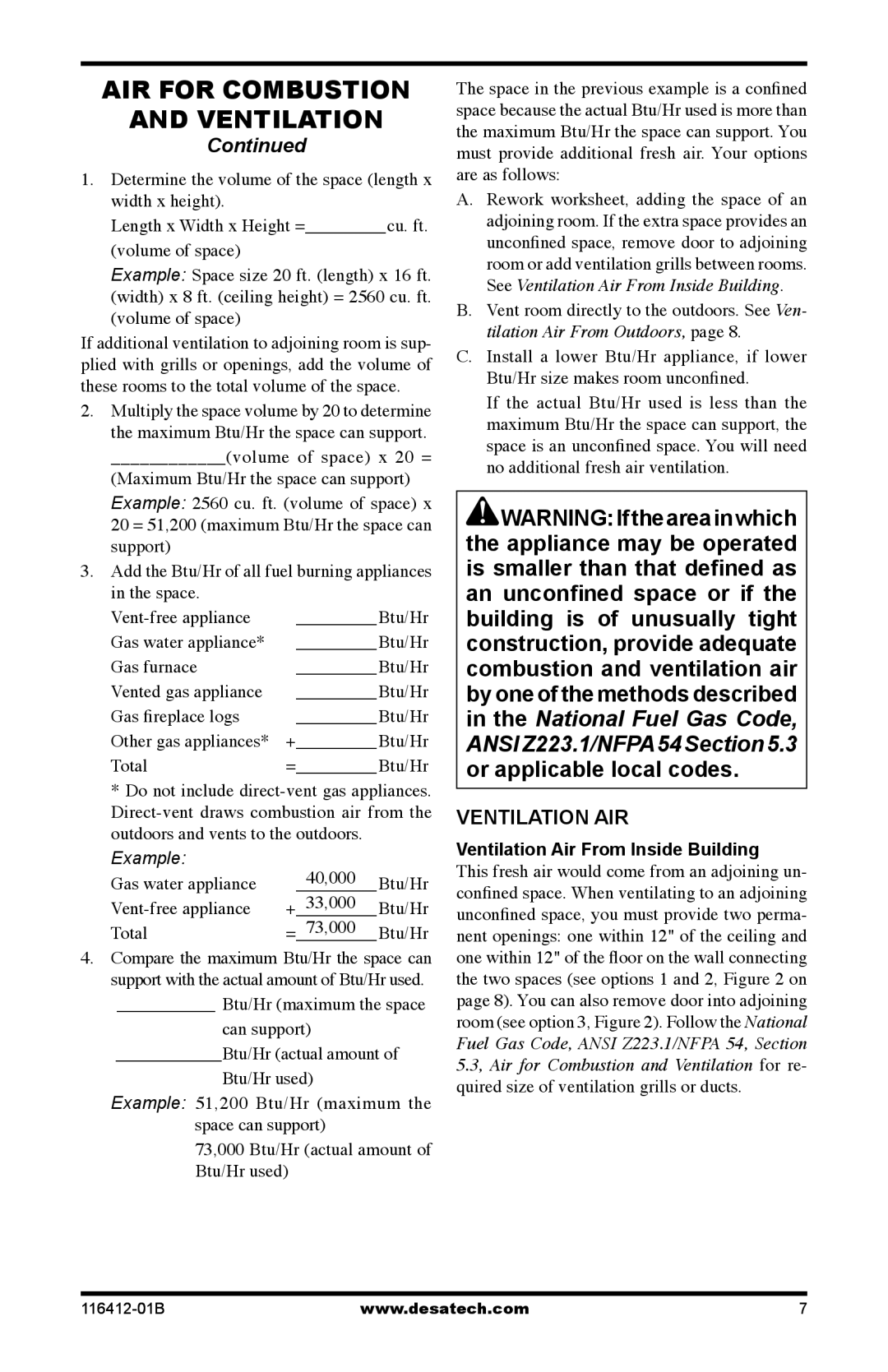VFRMV18PB, VFRMV18NB, VFRMV24NB, VFRMV24PB specifications
The Desa VFRMV series is a sophisticated line of heating solutions known for its efficiency and modern design. The models in this series include the VFRMV24NB, VFRMV24PB, VFRMV18NB, and VFRMV18PB, each sharing a commitment to provide superior comfort and versatility in various living spaces.One of the most notable features of the VFRMV series is its advanced heating technology. These units are equipped with a powerful burner system designed to maximize heat output while minimizing energy consumption. This makes the units not only environmentally friendly but also cost-effective, as users can enjoy warm indoor spaces without incurring high energy bills. The gas burners achieve a high thermal efficiency, ensuring that a significant amount of heat is delivered into the room promptly.
The VFRMV series is designed with customer convenience in mind. The models feature easy-to-read digital displays that allow users to adjust temperatures and settings effortlessly. These displays are intuitive, providing feedback on heating levels, operational status, and timer functions, enhancing the user experience. Furthermore, the inclusion of a remote control option allows homeowners to manage the heating from the comfort of their sitting area.
In terms of safety, the VFRMV series implements several key features. Each unit is equipped with an oxygen depletion sensor and a safety shut-off system. This ensures that the unit operates safely within its designated space, automatically shutting down if carbon monoxide levels rise or oxygen levels drop beyond safe limits. This commitment to safety provides peace of mind for households, making it a suitable choice for a wide range of environments.
Aesthetically, the VFRMV24NB and VFRMV24PB models feature a sleek design, with the "NB" models showcasing a bold black finish, while the "PB" variants offer a more classic propane-blue coloration. The smaller VFRMV18 series similarly combines elegance with functionality, ensuring that they can seamlessly blend into any home décor.
In summary, the Desa VFRMV24NB, VFRMV24PB, VFRMV18NB, and VFRMV18PB models exemplify modern heating solutions. With their advanced burner technology, user-friendly features, stringent safety measures, and stylish designs, they cater to contemporary requirements for effective indoor heating. Whether for residential or commercial use, the VFRMV series promises reliability and comfort all year round.

